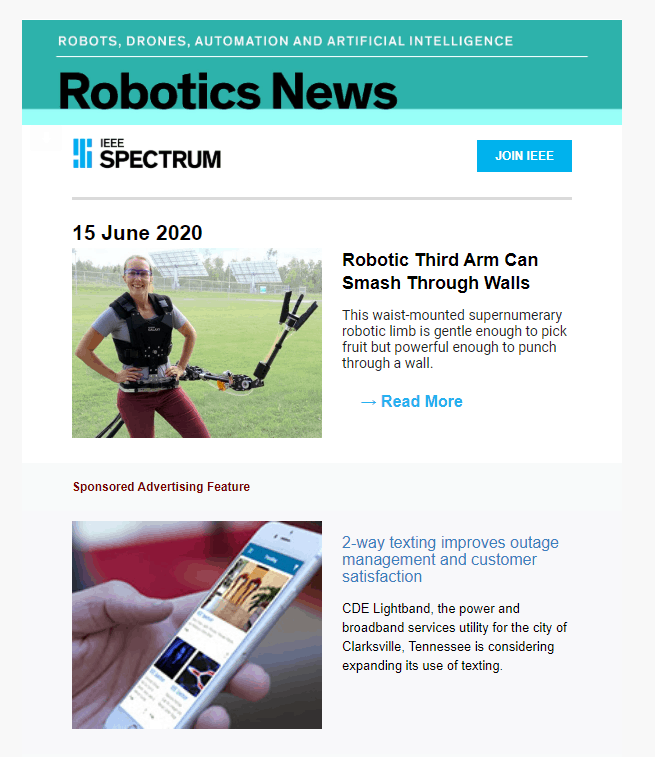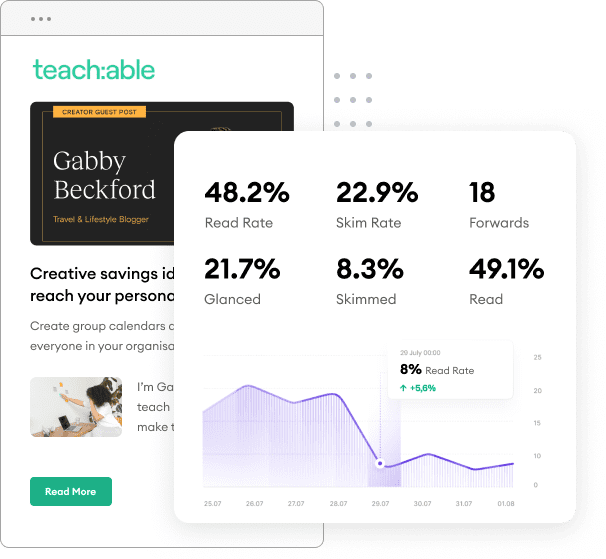Updated September 2020.
In a world of adblockers and content saturation, it’s getting harder than ever for marketers to reach their target consumers. Content marketing offers an authentic way to entice new prospects and nurture existing leads but how does your content cut through all the noise in the digital world?
Many marketers stick with the same old strategies and don’t go outside their comfort zones to engage consumers in different mediums and during different stages of the buyer’s journey. They figure their content strategy is “good enough” when in reality, it could be much better.
So, we’ve come up with some new content marketing tactics that you can implement in Q4 and wrap up your end-of-year marketing program with a bang!
9 B2B Content Marketing Tactics to Try in Q4
1. Use Your Paid Ad Budget Spend on Downloadable Content
Now more than ever, consumers scroll past Google Ads and look for websites and content that answers their questions. Instead of using your paid ad budget on Google Ads that direct to your company’s website, a content marketing tactic to try is allocating it for a few months on a piece of downloadable content.
Titling the content with a question or common pain point that your target consumer experiences, will appeal to your consumers and increase your chances of generating more leads if you gate your content with a lead capture form.
2. Write 2 Case Studies
When analyzing the decision phase of the buyer’s journey, a content marketing tactic to try is case studies. Case Studies are the highest converting forms of content that can convert a lead into a sale. These documents that showcase an actual experience that one of your consumers had with your brand makes your brand appear more reputable.
Sometimes it is hard to get clients to commit to participating in a case study because after all, it takes time out of their busy day to do a case study interview. However, we’ve had luck incentivizing clients with $50 Amazon gift cards for their time.

Be sure to distribute your case studies with a great marketing promotion plan and equip your sales team with them so that they can send case studies to leads they are working on. Make your case studies easy to find on your website as well because consumers love the ability to be self-sufficient when doing their brand research.
3. Conduct an Industry Research Report
Another content marketing tactic to try is to consult your buyer personas and uncover a topic that they would be interested in learning more about based on the input of their peers. Survey your clients and leads using Survey Monkey and compile your results in a downloadable report.
This content marketing tactic not only generates leads, but it also promotes thought leadership and shines a favorable spotlight on your brand.
As an example, you can refer to this report on the state of B2B content consumption complete with their lead capture form that you can replicate.
4. Earn 5 Pieces of User-Generated Content
It’s no secret that consumers rely on their peers for brand recommendations—not your brand. So, the goal is to seed the web with as much content as you can write about your brand from a third party. You can do this by working with influencers or incentivizing your clients to write blog posts about their experience with your brand. User-generated content is great fodder to use on your website, paid social, marketing materials, etc.
5. Email Out All Your Blog Posts to All of Your Contacts
Emailing out all of your blog posts promotes thought leadership, nurtures existing leads, inspires consumers, and gets your awesome blog content out in the world.

75% of marketers who email out blog posts email every post they create with the other 25% emailing a weekly or monthly digest of all of their blog posts in a single summary email. Maybe experiment with both options to decide what works best for your brand.
Be sure the experiment with subject lines and A/B test your messaging to see what gets the best results and continually refine your blog post emailing strategy.
6. Be a Guest on a Podcast or Webinar
There are several ways for consumers to digest content and one of those ways is to listen to thought leaders share their advice from the field on a podcast or webinar.
There are plenty of podcasts and brands that produce webinars in the niche your brand falls into. Locate these sources and reach out to them outlining your expertise and ask if you can be a guest on their podcast or webinar.
This is a great content marketing tactic and a way to get in front of new consumers and position yourself as a resource in your industry.
Some brands will give you the contact information of the people who attended your webinar so it couldn’t hurt to ask and gather these new leads!
7. Create an Infographic
Infographics are a great way to visually display a lot of data in one piece of content. Pick a topic that would be of interest to your buyer personas and track down every single point of data pertaining to that topic.
There are sites like Canva where you can create your infographic yourself of you can turn it over to a designer to make sure that it looks great and represents your brand well.
You can embed your infographic in blog posts so a great way to promote it is to include in your brand’s blog posts as well as guest posting on other sites.
8. Join 3 LinkedIn Groups
There are multiple LinkedIn groups that align with every industry. In these groups, you can network with like-minded marketers and share the content that you produce for your brand. Sharing your content in these groups means that the group members may share the content on their own social media channels. Be sure to return the favor and work out a deal where you’ll share their content if they share yours!
9. Crowdsource a Piece
Sometimes it can be hard to think of great content to constantly write about. To maximize this content marketing tactic, try reaching out to industry peers and influencers and have them weigh in on a topic. Compile their advice and best practices into a piece of content albeit a blog post or an ebook. As an added bonus, this content is very sharable because the people who weigh-in for your content will be sure to share it on their social channels since you’re featuring them!
Here at FeedOtter, we recently crowdsourced a piece about emailing blog posts and compiled best practices and advice from over 20 marketers who weighed in on emailing blog posts.
Final Thoughts
In the content-saturated digital world that we live in, it’s more important than ever to experiment with different content marketing tactics, strategies, and content types. Be sure to track and measure the effectiveness of each strategy so that each quarter you can refine your strategy based on the data you gather from your content marketing programs.
Is there a type of content that you’ve found to be more effective than others? We’d love to hear all about it on Twitter @Feed_Otter

